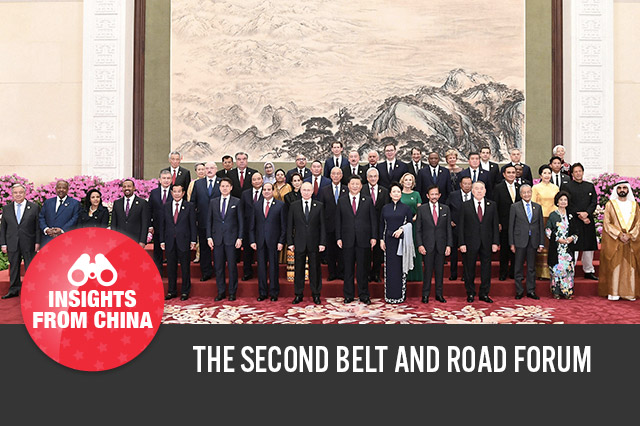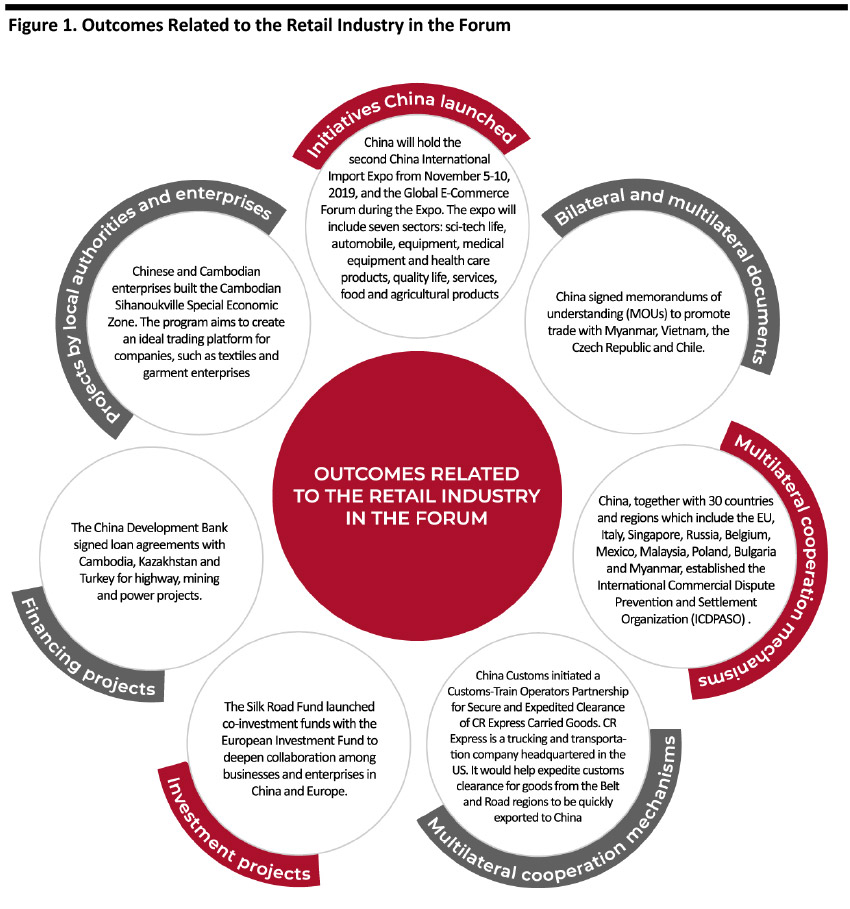
DIpil Das
Around 5,000 foreign guests from more than 150 countries and nearly 90 international organizations attended the second Belt and Road Forum, including 38 heads of state, heads of government, the UN Secretary-General and the President of the International Monetary Fund.
What is the Belt and Road?
The initiative aims to strengthen infrastructure, trade, and investment links between China and some 65 other countries that account collectively for over 30% of global GDP, according to the World Bank’s estimate as of March 2018. The Belt and Road Initiative consists primarily of the Silk Road Economic Belt, linking China to central and south Asia and onward to Europe, and the New Maritime Silk Road, linking China to Southeast Asia, the Arabian Gulf, North Africa and on to Europe.
What is the Belt and Road Forum?
The Belt and Road Forum for International Cooperation brought together leaders to discuss progress in China’s Belt and Road Initiative. The first Belt and Road Forum was held in May 2017 and the second in April 2019.
Here Are the Highlights
China’s President Xi Jinping presented the keynote speech, stating (among other things) that China will:
 Source: Global Times/Coresight Research[/caption]
Throughout the forum, China also tried to reconnect with countries that showed resistance to the Belt and Road Initiative. One critic, Malaysian Prime Minister Mahathir Mohamad, said that his country will now support the Belt and Road Initiative, although he did follow this remark with very diplomatically phrased notes of caution. This change of attitude came after the resumption of the once-stopped East Coast Rail Link project. Earlier in April 2019, Malaysia agreed to resume the East Coast Rail Link project with China based on the condition that the cost would be cut by one-third, from $15.9 billion to $10.7 billion, reversing an earlier decision to terminate the project in January 2019. The project aims to link Malaysia’s east coast on the South China Sea to the crucial Strait of Malacca on the west – the main shipping channel between Asia and Europe.
The cost reduction was meant to allay concerns that countries borrowing money from China for infrastructure projects could end up in a debt trap – for example, China took control of Sri Lanka’s port at Hambantota after the country was unable to repay the loans it took out to build the facility.
Key Insights
At the second Belt and Road Forum, China’s president Xi sought to emphasize the country’s desire to open to the outside world, and listed outcomes of the Belt and Road Initiative. Some outcomes are beneficial for retail industry, such as the construction of the Sihanoukville Special Economic Zone in Cambodia. China wants to show the Belt and Road Initiative is designed to contribute to the global economy.
Source: Global Times/Coresight Research[/caption]
Throughout the forum, China also tried to reconnect with countries that showed resistance to the Belt and Road Initiative. One critic, Malaysian Prime Minister Mahathir Mohamad, said that his country will now support the Belt and Road Initiative, although he did follow this remark with very diplomatically phrased notes of caution. This change of attitude came after the resumption of the once-stopped East Coast Rail Link project. Earlier in April 2019, Malaysia agreed to resume the East Coast Rail Link project with China based on the condition that the cost would be cut by one-third, from $15.9 billion to $10.7 billion, reversing an earlier decision to terminate the project in January 2019. The project aims to link Malaysia’s east coast on the South China Sea to the crucial Strait of Malacca on the west – the main shipping channel between Asia and Europe.
The cost reduction was meant to allay concerns that countries borrowing money from China for infrastructure projects could end up in a debt trap – for example, China took control of Sri Lanka’s port at Hambantota after the country was unable to repay the loans it took out to build the facility.
Key Insights
At the second Belt and Road Forum, China’s president Xi sought to emphasize the country’s desire to open to the outside world, and listed outcomes of the Belt and Road Initiative. Some outcomes are beneficial for retail industry, such as the construction of the Sihanoukville Special Economic Zone in Cambodia. China wants to show the Belt and Road Initiative is designed to contribute to the global economy.
- Expand market access for foreign investment.
- Strengthen international cooperation on intellectual property protection.
- Increase imports of goods and services.
- Boost international macro-economic policy coordination.
- Ensure bilateral and multilateral deals are implemented in good faith and the rule of law is obeyed.
 Source: Global Times/Coresight Research[/caption]
Throughout the forum, China also tried to reconnect with countries that showed resistance to the Belt and Road Initiative. One critic, Malaysian Prime Minister Mahathir Mohamad, said that his country will now support the Belt and Road Initiative, although he did follow this remark with very diplomatically phrased notes of caution. This change of attitude came after the resumption of the once-stopped East Coast Rail Link project. Earlier in April 2019, Malaysia agreed to resume the East Coast Rail Link project with China based on the condition that the cost would be cut by one-third, from $15.9 billion to $10.7 billion, reversing an earlier decision to terminate the project in January 2019. The project aims to link Malaysia’s east coast on the South China Sea to the crucial Strait of Malacca on the west – the main shipping channel between Asia and Europe.
The cost reduction was meant to allay concerns that countries borrowing money from China for infrastructure projects could end up in a debt trap – for example, China took control of Sri Lanka’s port at Hambantota after the country was unable to repay the loans it took out to build the facility.
Key Insights
At the second Belt and Road Forum, China’s president Xi sought to emphasize the country’s desire to open to the outside world, and listed outcomes of the Belt and Road Initiative. Some outcomes are beneficial for retail industry, such as the construction of the Sihanoukville Special Economic Zone in Cambodia. China wants to show the Belt and Road Initiative is designed to contribute to the global economy.
Source: Global Times/Coresight Research[/caption]
Throughout the forum, China also tried to reconnect with countries that showed resistance to the Belt and Road Initiative. One critic, Malaysian Prime Minister Mahathir Mohamad, said that his country will now support the Belt and Road Initiative, although he did follow this remark with very diplomatically phrased notes of caution. This change of attitude came after the resumption of the once-stopped East Coast Rail Link project. Earlier in April 2019, Malaysia agreed to resume the East Coast Rail Link project with China based on the condition that the cost would be cut by one-third, from $15.9 billion to $10.7 billion, reversing an earlier decision to terminate the project in January 2019. The project aims to link Malaysia’s east coast on the South China Sea to the crucial Strait of Malacca on the west – the main shipping channel between Asia and Europe.
The cost reduction was meant to allay concerns that countries borrowing money from China for infrastructure projects could end up in a debt trap – for example, China took control of Sri Lanka’s port at Hambantota after the country was unable to repay the loans it took out to build the facility.
Key Insights
At the second Belt and Road Forum, China’s president Xi sought to emphasize the country’s desire to open to the outside world, and listed outcomes of the Belt and Road Initiative. Some outcomes are beneficial for retail industry, such as the construction of the Sihanoukville Special Economic Zone in Cambodia. China wants to show the Belt and Road Initiative is designed to contribute to the global economy.